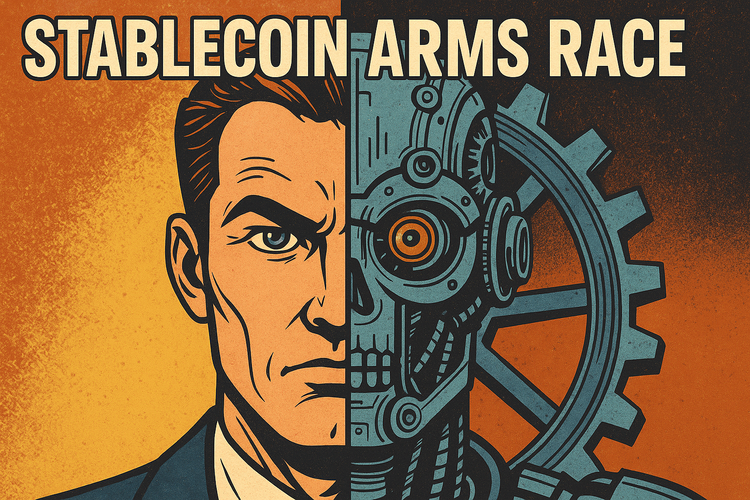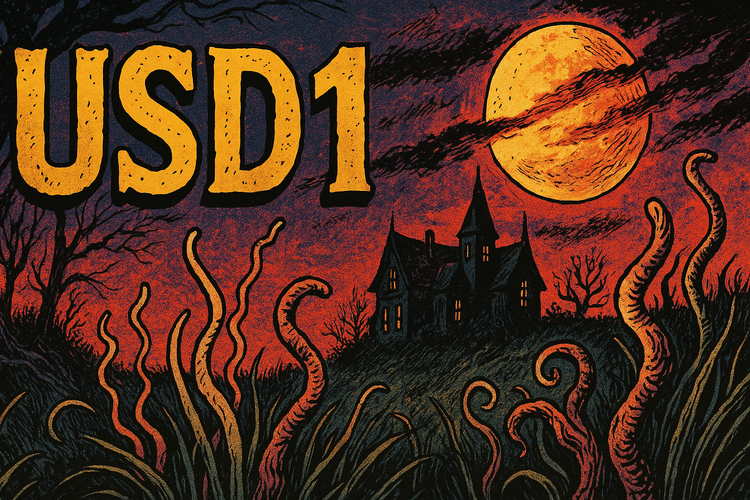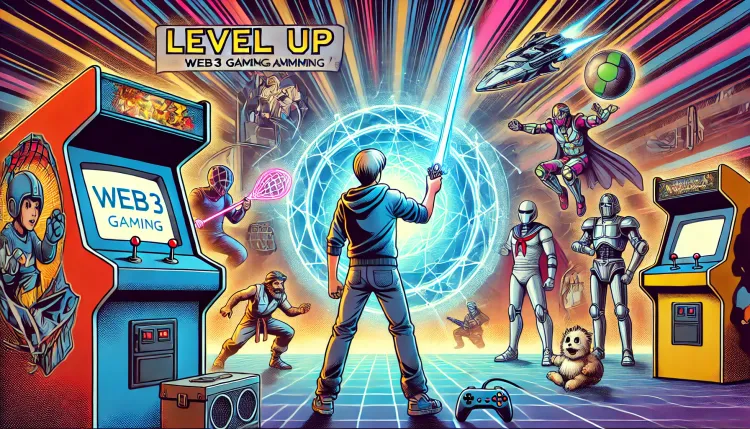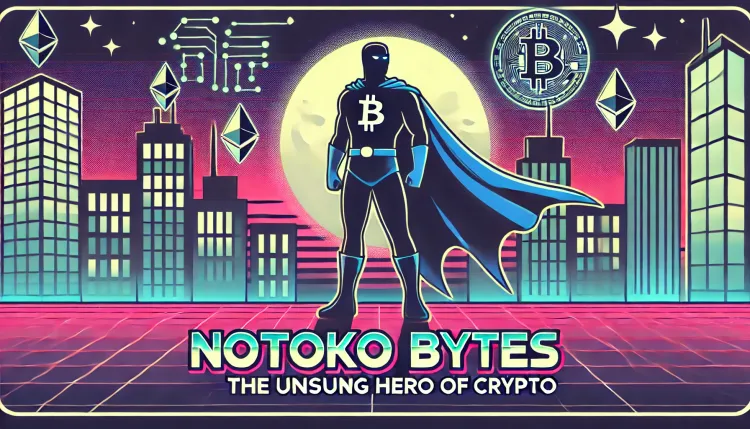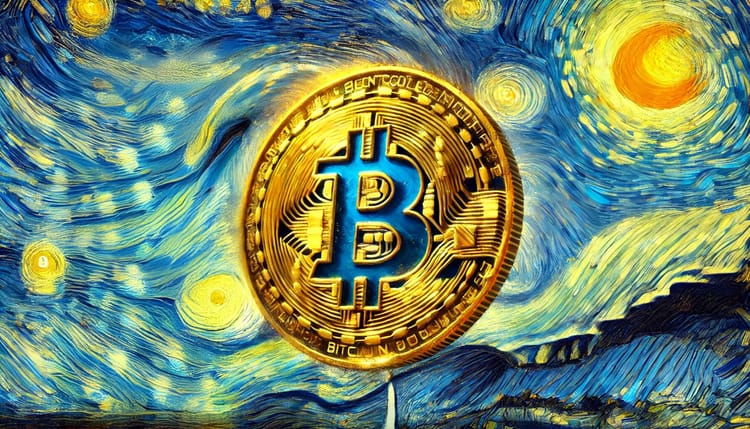The Intersection of NFTs and DeFi: Unlocking New Possibilities in the Crypto World
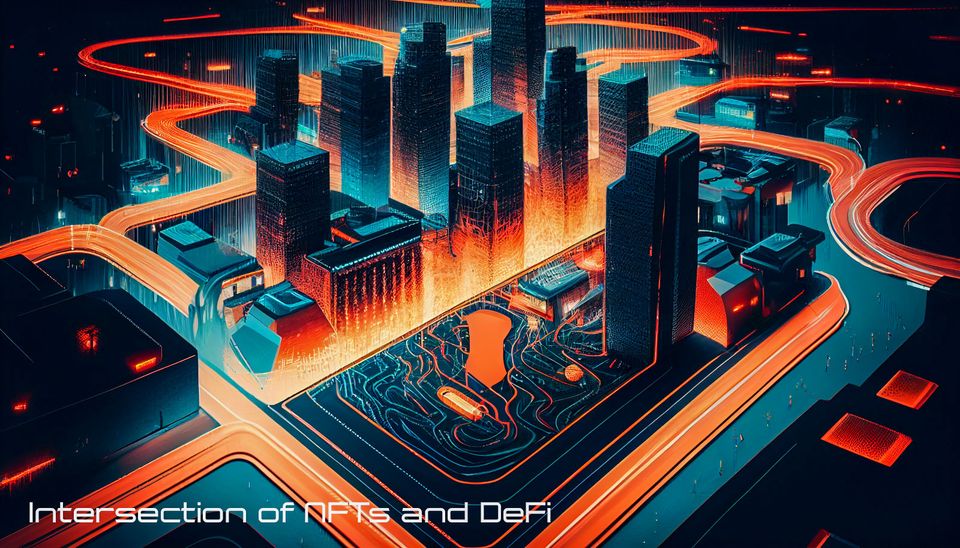
In recent years, the cryptocurrency landscape has been abuzz with two groundbreaking innovations: Non-Fungible Tokens (NFTs) and Decentralized Finance (DeFi). While NFTs have captivated the world with their unique digital assets, representing everything from digital art to virtual real estate, DeFi has been busy transforming traditional financial services through decentralized, blockchain-based platforms. The convergence of these two revolutionary technologies is unlocking new possibilities and applications in the crypto world, gaining significant traction and shaping the future of digital assets and finance.
This comprehensive guide will explore the intersection of NFTs and DeFi, delving into novel concepts such as NFT-based lending, borrowing, and collateralization, fractional ownership of NFTs, NFT-focused yield farming, and investment vehicles. By examining the challenges, risks, and opportunities that lie ahead, this article aims to provide valuable insights into the rapidly evolving world of NFTs and DeFi, catering to a diverse audience keen on understanding the synergy between these trending topics.
NFTs in DeFi: Lending, Borrowing, and Collateralization
One of the most exciting developments in the convergence of NFTs and DeFi is the emergence of platforms that enable users to leverage their NFTs for lending, borrowing, and collateralization purposes. This synergy allows holders of unique digital assets to unlock liquidity and access financial services, previously exclusive to fungible tokens.
A. Using NFTs as collateral for loans
Traditionally, securing a loan required collateral in the form of fungible assets, such as cryptocurrencies or stablecoins. However, the integration of NFTs into DeFi platforms has expanded the range of acceptable collateral types. Now, NFT holders can pledge their digital art, collectibles, or virtual real estate as collateral, obtaining loans without parting with their valuable assets permanently.
This innovative approach to collateralization allows individuals to access funds for personal or business use without the need for credit checks or traditional financial intermediaries. As a result, the financial ecosystem becomes more inclusive, and the potential value of NFTs is further realized.
B. Innovative platforms enabling NFT-based lending and borrowing
Several platforms have emerged to facilitate NFT-based lending and borrowing, catering to the growing demand for decentralized financial services that incorporate unique digital assets.
NFTfi, for example, is a peer-to-peer lending platform that enables users to borrow and lend cryptocurrencies using NFTs as collateral. Borrowers can deposit their NFTs, while lenders provide the requested loan amount in a supported cryptocurrency. The platform automatically handles the collateral management, ensuring that the NFTs are safely locked away until the loan is repaid.
Aavegotchi, on the other hand, takes a gamified approach to NFT-based lending. The platform features digital avatars, or "Aavegotchis," which are tokenized representations of collateralized loans. Users can stake their NFTs to create Aavegotchis, which can then be used in games and other activities, while simultaneously earning interest on the staked assets.
These platforms are just a few examples of how NFTs and DeFi are coming together to redefine the concept of lending and borrowing in the digital realm, paving the way for a more inclusive and innovative financial ecosystem.
Fractional Ownership of NFTs
The concept of fractional ownership has become increasingly popular in the world of NFTs, as it enables a more democratic and accessible approach to investing in unique digital assets. By fractionalizing NFTs into smaller, fungible tokens, investors can own a portion of an NFT's value without committing to purchasing the entire asset. This not only makes high-value NFTs more affordable but also facilitates easier trading and price discovery.
A. The concept of fractionalizing NFTs
Fractionalizing an NFT involves splitting it into multiple fungible tokens, each representing a share of the underlying asset. These tokens can be traded, bought, or sold individually, allowing investors to gain exposure to high-value NFTs without having to purchase the entire asset. This process democratizes access to the NFT market, enabling a broader range of investors to participate in the burgeoning digital asset space.
B. Platforms enabling fractional ownership of NFTs
Several platforms have emerged to facilitate fractional ownership of NFTs, allowing users to buy, sell, and trade shares of unique digital assets.
NIFTEX is a pioneering platform in the fractional NFT space, offering users the ability to create, buy, and sell fractional shares of their NFTs. Through a simple user interface, NIFTEX enables NFT owners to divide their assets into "shards," which can then be traded on the platform's decentralized exchange.
Fractional, another player in the fractional NFT market, allows users to mint and trade fractionalized NFTs using its proprietary smart contracts. With a focus on high-value NFTs, Fractional provides a robust platform for users to invest in and manage their fractional ownership of digital assets.
The rise of fractional ownership platforms has made NFTs more accessible and liquid, enabling a wider range of participants to benefit from the growing digital asset economy. As the NFT market continues to expand, fractional ownership will likely play a critical role in shaping the future of digital asset investment and ownership.
NFT-based Yield Farming and Staking
Another promising development in the convergence of NFTs and DeFi is the emergence of yield farming and staking opportunities involving unique digital assets. By participating in these activities, users can earn rewards and generate passive income from their NFT holdings, further demonstrating the potential of NFTs as financial instruments.
A. Earning rewards through NFT staking
Staking is a popular DeFi activity that involves locking up digital assets to support a blockchain network's operations, such as validating transactions or securing the network. In return, users receive rewards in the form of tokens or other digital assets. The integration of NFTs into staking mechanisms allows users to earn rewards based on their unique digital assets, adding a new dimension to the world of DeFi.
B. Liquidity mining programs involving NFTs
Liquidity mining, or yield farming, is another popular DeFi activity in which users provide liquidity to decentralized exchanges and other platforms to facilitate trading and other financial transactions. In return, they receive rewards in the form of tokens or other assets. By incorporating NFTs into liquidity mining programs, platforms can offer users the opportunity to earn rewards based on their NFT holdings, creating new incentives for participation in the DeFi ecosystem.
C. Platforms offering NFT-based yield farming opportunities
Several platforms have emerged to offer NFT-based yield farming and staking opportunities, capitalizing on the growing interest in NFTs as financial instruments.
Rarible, a popular NFT marketplace, has introduced its native governance token, RARI, which users can earn by participating in the platform's liquidity mining program. By providing liquidity for specific NFT pools, users can receive RARI tokens as rewards, enabling them to benefit from their NFT holdings.
Charged Particles, another innovative platform in the NFT space, allows users to stake their NFTs and earn interest in the form of various cryptocurrencies. By offering a unique approach to NFT-based yield farming, Charged Particles exemplifies the potential of NFTs to drive growth and innovation in the DeFi sector.
As the worlds of NFTs and DeFi continue to intersect, the opportunities for yield farming and staking involving unique digital assets are likely to expand, providing users with new ways to generate income and maximize the value of their NFT holdings.
NFT Index Funds and Investment Vehicles
As the NFT market continues to mature, new investment products have emerged that allow investors to gain diversified exposure to the burgeoning digital asset class. NFT index funds and exchange-traded funds (ETFs) offer investors the opportunity to invest in a basket of NFTs or NFT-related assets, mitigating the risks associated with investing in individual tokens.
A. The emergence of NFT-focused investment products
NFT index funds and ETFs provide a more accessible and risk-mitigating approach for investors to participate in the NFT market. By offering diversified exposure to various NFTs and NFT-related assets, these investment vehicles reduce the concentration risk associated with investing in a single NFT or a small group of NFTs.
B. Examples of NFT index funds and ETFs
Several innovative investment vehicles have been introduced to the market, catering to the growing interest in NFTs as an asset class.
NFTX is a decentralized platform that allows users to create, buy, and sell index funds based on NFT collections. These funds, known as NFTX vaults, are tokenized and can be traded on decentralized exchanges. By providing a simple and efficient way to gain diversified exposure to the NFT market, NFTX opens up new possibilities for investors in the digital asset space.
NFT20 is another platform that offers index funds based on NFT collections. By pooling NFTs from various projects, NFT20 enables users to invest in a diversified portfolio of digital assets through its native governance token, MUSE. This approach allows investors to benefit from the growth and popularity of NFTs without having to navigate the complexities of buying and managing individual tokens.
The advent of NFT index funds and investment vehicles highlights the growing recognition of NFTs as a legitimate asset class with significant potential for growth and returns. As the NFT market continues to evolve, it is likely that more sophisticated investment products will emerge, catering to the diverse needs and preferences of investors in the digital asset space.
Challenges and Risks in Combining NFTs and DeFi
While the convergence of NFTs and DeFi offers numerous opportunities for innovation and growth in the digital asset space, it also presents several challenges and risks that must be considered by investors and users alike. Understanding these potential pitfalls is essential for navigating the rapidly evolving landscape of NFTs and DeFi.
A. Price volatility and valuation difficulties
One of the primary challenges in combining NFTs and DeFi is the inherent price volatility of digital assets. The value of NFTs can be highly unpredictable due to factors such as market sentiment, project hype, and scarcity. Additionally, accurately valuing NFTs can be difficult, given their uniqueness and the lack of standardized pricing mechanisms.
B. Liquidity concerns
Liquidity is another critical concern when integrating NFTs into DeFi platforms. Unlike fungible tokens, NFTs are unique and often have limited trading volumes, which can lead to liquidity issues when using them for collateral, lending, or yield farming. Fractional ownership and NFT index funds can help address these concerns to some extent, but liquidity challenges may persist, especially for less popular or highly niche NFTs.
C. Regulatory and legal issues
As the worlds of NFTs and DeFi converge, regulatory and legal issues may arise due to the novel nature of these technologies and the potential for misuse. For instance, regulators may scrutinize platforms that facilitate NFT-based lending or fractional ownership, as these activities could be seen as securities offerings or potentially facilitating money laundering. Navigating the complex and evolving regulatory landscape is crucial for ensuring the long-term success and growth of NFTs and DeFi.
Despite these challenges and risks, the convergence of NFTs and DeFi presents a wealth of opportunities for innovation, disruption, and growth in the digital asset space. By addressing these concerns and fostering responsible development, the combined potential of NFTs and DeFi can be fully realized, ushering in a new era of decentralized finance and digital asset ownership.
The Future of NFTs and DeFi: Opportunities and Outlook
As the integration of NFTs and DeFi continues to gain traction, the potential for innovation, disruption, and growth in the digital asset space becomes increasingly evident. By exploring new concepts, addressing challenges, and fostering responsible development, the combined potential of NFTs and DeFi can revolutionize the way we interact with digital assets and financial services.
A. Emerging use cases and applications
The convergence of NFTs and DeFi is paving the way for a wide range of novel applications and use cases. These include decentralized insurance policies tied to NFTs, the creation of decentralized autonomous organizations (DAOs) that govern NFT collections, and the incorporation of NFTs into decentralized prediction markets. As the ecosystem matures, it is likely that even more innovative applications will emerge, expanding the scope and impact of NFTs and DeFi.
B. Cross-chain and interoperability developments
As the blockchain landscape evolves, cross-chain and interoperability solutions are becoming increasingly important. By enabling seamless communication and interaction between different blockchain networks, these technologies can facilitate the integration of NFTs and DeFi across a diverse array of platforms and ecosystems. This will likely drive further growth and adoption, as users and investors can more easily access and engage with NFTs and DeFi services across different networks.
C. Growing institutional interest
As NFTs and DeFi continue to mature, institutional interest in these emerging asset classes is likely to grow. With the development of sophisticated investment vehicles such as NFT index funds and ETFs, as well as the increasing prevalence of fractional ownership, institutional investors may be drawn to the potential returns and diversification benefits offered by the NFT and DeFi markets.
In conclusion, the future of NFTs and DeFi is rich with possibilities and opportunities for innovation, disruption, and growth. By addressing the challenges and risks associated with these emerging technologies, the combined potential of NFTs and DeFi can be fully realized, transforming the digital asset space and reshaping the future of finance.
Conclusion and Key Takeaways
The convergence of NFTs and DeFi has the potential to redefine the digital asset landscape and create a wealth of new opportunities for innovation, disruption, and growth. By examining the various intersections between these emerging technologies, we can gain valuable insights into the future of decentralized finance and digital asset ownership.
Key takeaways from this article include
- The integration of NFTs and DeFi is driving innovative developments, such as NFT-based lending and borrowing, fractional ownership, yield farming, and the creation of NFT index funds and investment vehicles.
- Platforms that enable NFT-based lending and borrowing, such as NFTfi and Aavegotchi, are redefining the concept of collateralization and expanding the range of financial services accessible to users.
- Fractional ownership platforms, such as NIFTEX and Fractional, are democratizing access to high-value NFTs and promoting liquidity in the digital asset market.
- Despite the numerous opportunities and innovations, challenges such as price volatility, liquidity concerns, and regulatory issues must be addressed to ensure the long-term success and growth of NFTs and DeFi.
- The future of NFTs and DeFi is rich with possibilities, as emerging use cases, cross-chain developments, and growing institutional interest promise to drive further growth and adoption.
By understanding the synergies between NFTs and DeFi and navigating the associated challenges and risks, users, investors, and innovators can tap into the immense potential of these technologies and reshape the future of digital asset ownership and decentralized finance.
Please share your thoughts on the article by clicking below Emoji ...
Disclosure
*The information provided on this cryptocurrency blog is for educational and informational purposes only and should not be construed as financial, investment, or trading advice. The authors, contributors, and administrators of this blog are not licensed financial professionals and do not hold any formal qualifications in the fields of finance, economics, or cryptocurrencies.
The content on this blog is based on the authors' personal opinions, experiences, and research, and should not be considered as professional financial guidance. While we strive to provide accurate, up-to-date, and reliable information, we cannot guarantee the accuracy or completeness of the information presented. Cryptocurrency markets are highly volatile, and investments in cryptocurrencies and related assets carry a substantial risk of loss.
Before making any financial decisions or investments, you should consult with a qualified financial advisor or perform your own research and analysis. Any actions taken based on the information provided on this blog are at your own risk, and the authors, contributors, and administrators of this blog cannot be held liable for any losses or damages resulting from the use of the information found herein.
By using this blog, you acknowledge that you have read and understood this disclosure and agree to assume full responsibility for any decisions or actions you take based on the information provided.*




